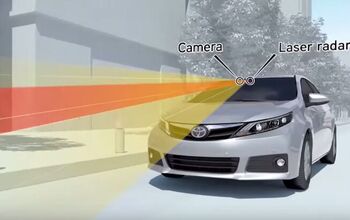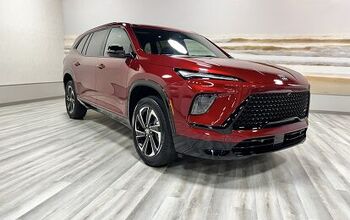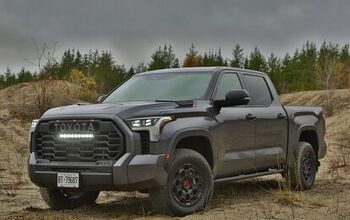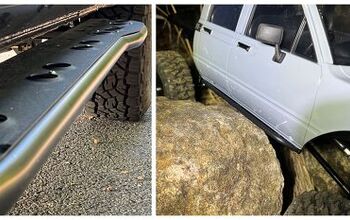What is Automatic Emergency Braking?

Back in 2016, a consortium of automakers representing more than 99 percent of the U.S. auto market agreed to make automatic emergency braking a standard feature on virtually all new cars by Sept. 1, 2022.
That means this technology, also referred to as autonomous emergency braking, is about to become much more commonplace. If you own a vehicle made in the past year or two, it’s likely that it came standard with automatic emergency braking, or at least some sort of forward collision warning system.
SEE ALSO: 10 Cars With Excellent Active Safety Systems
So what is automatic emergency braking, anyway? In this post, we’re going to answer that question and also provide some additional info on related technologies such as forward collision warning and adaptive cruise control with traffic assist.
What is Automatic Emergency Braking?
We imagine “what is automatic emergency braking?” is a question that’s going to be on a lot of car shoppers’ minds in the coming years.
Automatic emergency braking is a system that can detect when a frontal collision may be imminent and will automatically apply the brakes as needed, even bringing the vehicle to a complete stop if necessary.
Most of these systems will also detect objects other than vehicles, such as pedestrians and cyclists.
What is Forward Collision Warning?
Cars with just forward collision warning can’t automatically apply the brakes. These systems will only provide visual and audible warnings when they detect approaching objects, leaving it up to the driver to act accordingly.
If a car offers forward collision warning and the manufacturer doesn’t mention automatic emergency braking, it’s probably one of these more simple warning-only systems.
Systems with only forward collision warning aren’t as safe as those with automatic emergency braking, but they are still useful. A 2018 Insurance Institute for Highway Safety study found that forward collision warning systems without autobrake reduced collision rates by an average of 27%.
Forward collision warning-only systems won’t be as common going forward, with standard automatic emergency braking set to become the law in a few years. You will still come across them if you shop used, however.
SEE ALSO: Why Your Next Car Should Have Forward Collision Warning
Cool! How Do These Systems Work?
Different automakers use different technologies to enable forward collision warning and automatic emergency braking. Many automakers will use a combination of radar and camera(s) to detect nearby objects. The sensors and camera then communicate with an onboard computer, telling it when to send a warning to the cabin or how hard to apply the brakes. The brake pressure applied is based on the distance from approaching objects and the rate of approach.
Many of these systems will work in three stages.
Honda’s Collision Mitigation Braking System (CMBS), for example, will first provide a visual and audible warning if it detects an approaching object in the vehicle’s path. The same visual and audible alert will continue into the second stage, but the vehicle will also begin to lightly apply the brakes, preloading the system for an anticipated emergency braking event. If the driver still does not react, the system will apply the brakes harder and bring the vehicle to a complete stop. This happens in a very short amount of time, usually less than a few seconds.
The Honda CMBS uses a subtle wave radar sensor in the grille and a forward-facing camera mounted near the rearview mirror to detect nearby objects. Most other automatic emergency braking systems from other automakers will use a similar setup, but the location of the camera and sensors may vary.
You can watch Honda’s explainer video below for a visual breakdown of how CMBS operates.
Other Similar Safety Systems
There are other semi-autonomous driving features that are similar to automatic emergency braking.
Subaru’s EyeSight system with automatic emergency braking will also alert the driver of when a vehicle in front has moved. This can be helpful in stop and go traffic when you may not have realized a stoplight has turned from red to green, for example.
SEE ALSO: Lane Departure Safety Systems: What you Need to Know
Higher end systems will brake for you and also perform other driving functions. Mercedes-Benz Distronic Plus system, for example, has a feature called Traffic Jam Assistant. Semi-autonomous driving systems with features such as this can progressively bring the vehicle to a full stop and also accelerate up to a preset speed when the car in front has moved. Our article What is Adaptive Cruise Control? provides some more information on such systems.
Do All Automakers Offer Automatic Emergency Braking?
Every major, mainstream automaker in the United States and Canada will offer a version of autonomous emergency braking on most of its products, although availability will vary from model to model and trim to trim.
SEE ALSO: 4 Major Pros and Cons of Autonomous Vehicles
The aforementioned initiative to introduce automatic emergency braking on all vehicles by 2022 will see this technology rolled out to nearly all vehicles. Automakers that signed that agreement include Audi, BMW, FCA, Ford, General Motors, Honda, Hyundai, Jaguar Land Rover, Kia, Maserati, Mazda, Mercedes-Benz, Mitsubishi, Nissan, Porsche, Subaru, Tesla, Toyota, Volkswagen and Volvo.
The IIHS predicts the rollout of automatic emergency braking could reduce rear-end crashes by up to 40 percent. The safety watchdog also believes that by 2025, the commitment will prevent 28,000 crashes and 12,000 injuries.

Sam McEachern holds a diploma in journalism from St. Clair College in Windsor, Ontario, and has been covering the automotive industry for over 5 years. He conducts reviews and writes AutoGuide's news content. He's a die-hard motorsports fan with a passion for performance cars of all sorts.
More by Sam McEachern



































Comments
Join the conversation